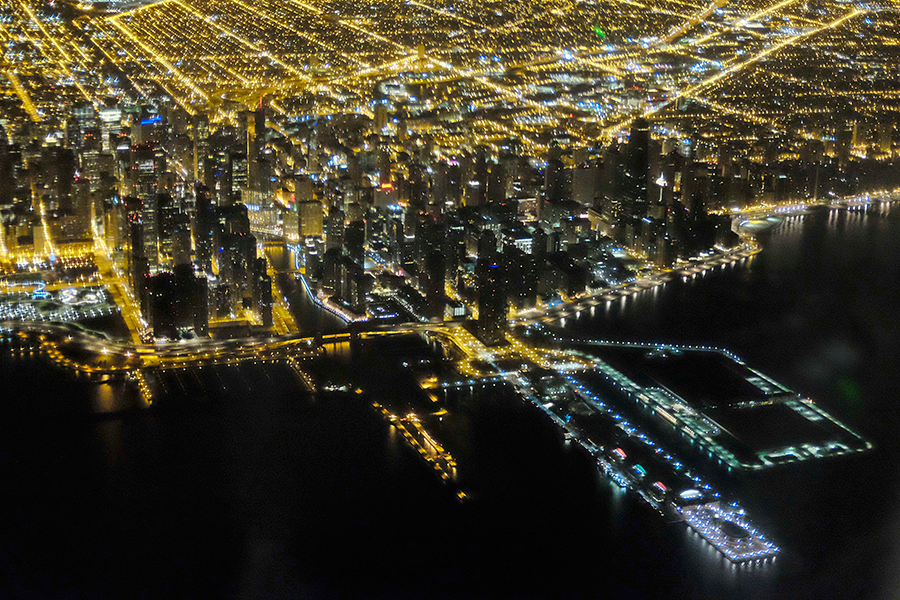A snowless Chicago? Windy City sees fewest flurries in 146 years.
Loading...
It's been a warm couple of months in Chicago. For the first time in 146 years of record-keeping, the National Weather Service documented no snow on the ground in the city during January and February combined.
The snow measurement, taken every morning at 6 a.m. at O'Hare International Airport, did not record small amounts of snow that fell after that time and melted. But even including the occasional flurries that were not included in the NWS account, the two months were still unseasonably lacking in snow, as high temperatures made for an early spring in many parts of the United States.
"I hope it happens more often," local resident Patricia Orta told the Chicago Tribune. "While it lasts, this is great!"
The official total amount of snowfall in January and February was between 0.5 and 0.6 inches, with almost all of it occurring in January. While January 1928 boasted a mere 0.2 inches of total snowfall and February 1987 and 1998 tied with this year’s mere traces of snow, the combined total of January and February in 2017 was far lower than the previous January-February record, 2.5 inches in 1931.
"This is occurring against a backdrop of a changing climate," WGN-TV meteorologist Tom Skilling told the Tribune. "I think the door is open to additional unusual weather events as we go forward."
Of course, the sample size of a couple of months is too small a timeframe to say for sure that the lack of snowfall is a direct consequence of climate change, since weather has natural fluctuations from year to year. But years of data do indicate that human-caused climate change is having an increasing impact on US weather patterns, including an earlier arrival of spring. As The Christian Science Monitor previously reported:
Forget what Punxsutawney Phil's shadow showed – spring is making its way to large swathes of the country between two and three weeks ahead of schedule, according to a study from a federal agency.
Unseasonably warm temperatures have hit coastal California, southern Nevada, southeastern Colorado, and several Midwestern states as well as parts of the Northeast, according to new maps produced by the USA National Phenology Network, which is led by the United States Geological Survey agency. While shedding some layers and enjoying nice weather in February has come as a treat for many, the unexpected weather changes could pose economic and environmental challenges.
"While these earlier springs might not seem like a big deal – and who among us doesn’t appreciate a balmy day or a break in dreary winter weather – it poses significant challenges for planning and managing important issues that affect our economy and our society," Jake Weltzin, a USGS ecologist and the executive director of the USA-NPN, said in a statement.
Jim Angel, state climatologist at the University of Illinois' Illinois State Water Survey, told the Tribune that the lack of snow in the northern part of the state could cost growers millions of dollars if there is a cold snap in March.
"Because it's been so warm all through the winter," Dr. Angel said, "the trees and shrubs and perennials [might] come out a little bit too early for their own good."
Fruit trees that should be dormant right now may start to bud or even leaf out, he explained, which makes them much more vulnerable to late-season frosts, like the cold snaps in April 2012 and 2007 that did enormous damage to apple, peach, and cherry crops in Illinois.
But early springs bring advantages for many people, with lower heating bills and fewer ice-related accidents on the roads. Warm weather can also help boost economic infrastructure, allowing more construction projects and increased shopping.
"In the past mild winters, we've seen that net benefit from the economics side," Angel says, "unless you're selling snow shovels."








